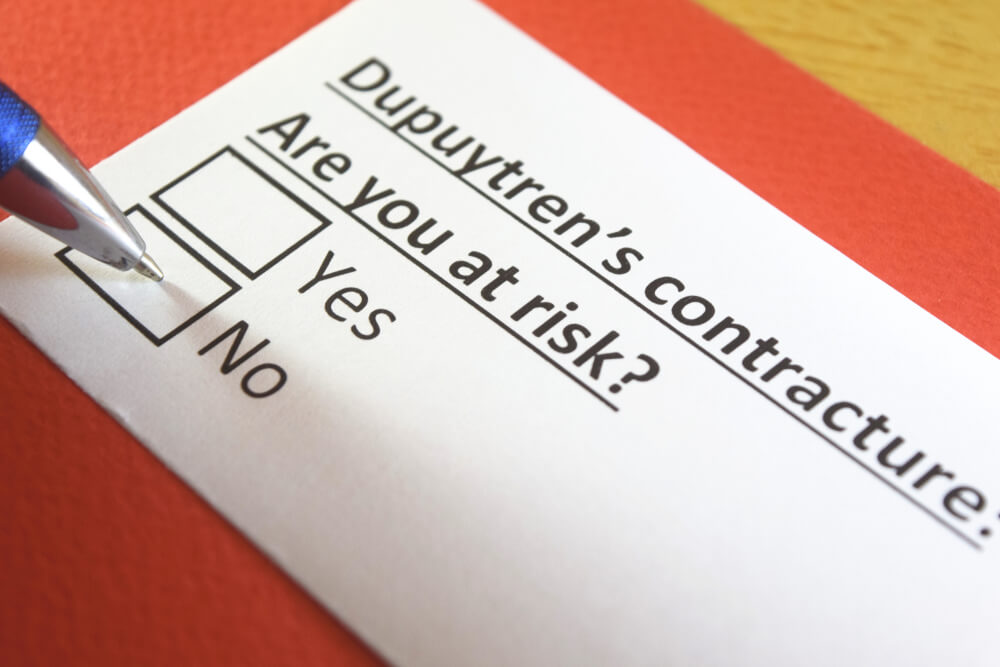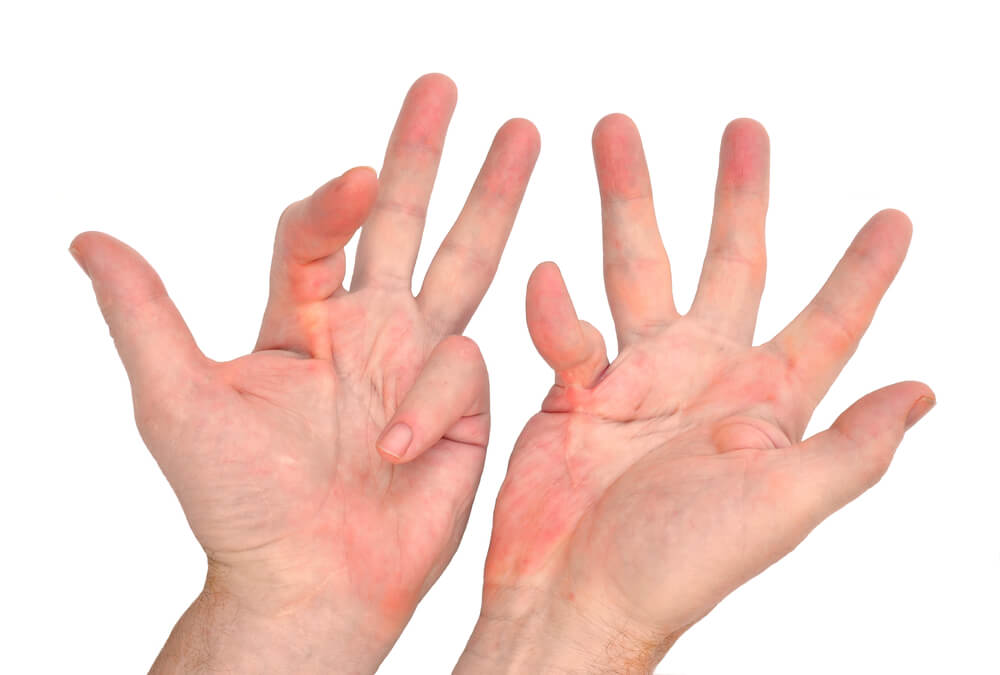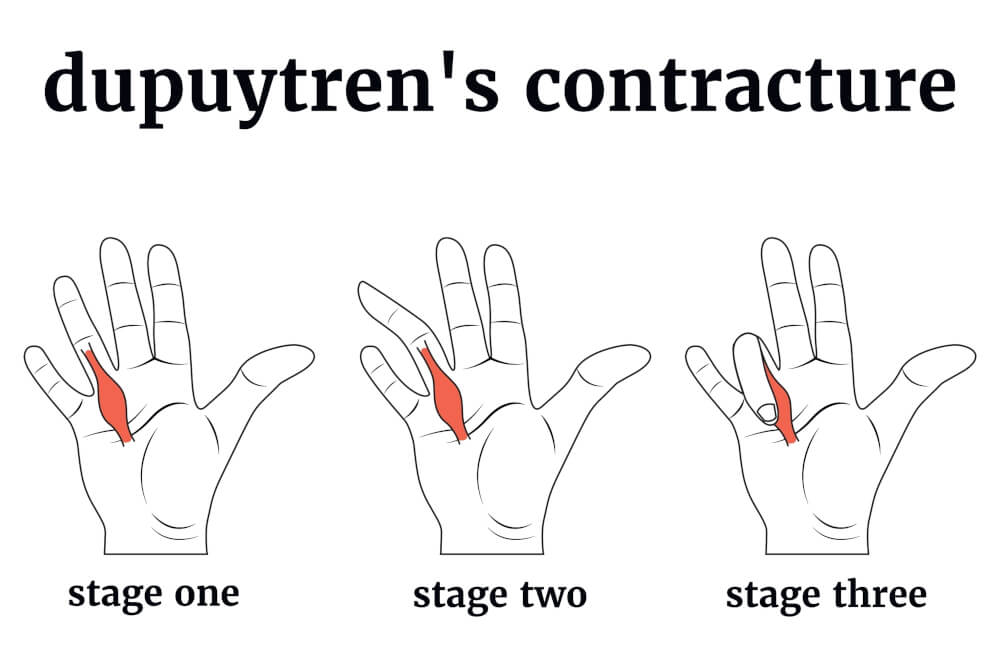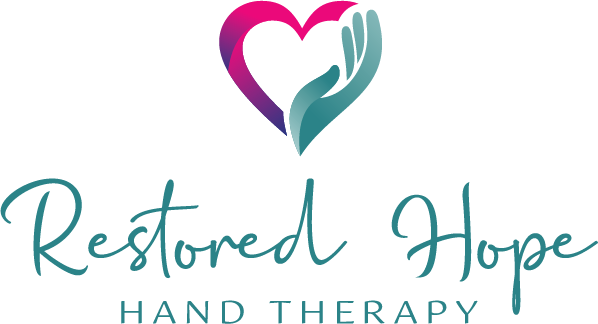Dupuytren's Contracture
Home » Treatment » Hand & Wrist » Dupuytren’s Contracture
Understanding Dupuytren's Contracture
Dupuytren’s contracture is a common hand condition characterized by the progressive thickening and tightening of the connective tissue in the palm and fingers. This condition can result in the fingers becoming permanently bent, making it difficult to straighten them. Named after the French surgeon Baron Guillaume Dupuytren, who first described it in the 19th century, Dupuytren’s contracture is a fascinating yet challenging medical condition. In this article, we will delve into the various aspects of Dupuytren’s contracture, including its causes, symptoms, diagnosis, and treatment options.
If you have a question about whether your condition should be treated by one of our hand therapists, call Restored Hope Hand Therapy at (928) 275-2201.

How Does it Happen?
The exact cause of Dupuytren’s contracture is still not fully understood, but several factors are believed to contribute to its development. Genetics plays a significant role in this condition, as it often runs in families. Some studies have identified specific genetic markers associated with a higher risk of developing Dupuytren’s contracture.
Other contributing factors include age, gender, and ethnicity. Dupuytren’s contracture is more common in older individuals, particularly those of Northern European descent. Men are also more likely to develop this condition than women.
Moreover, there are associations with certain lifestyle factors, such as heavy alcohol consumption and smoking. Prolonged exposure to vibrations, such as those experienced by certain occupations, may increase the risk as well.

Symptoms
The primary symptom of Dupuytren’s contracture is the gradual development of nodules or lumps in the palm, typically near the base of the fingers. As the condition progresses, these nodules may become thick cords of tissue that extend into the fingers. This fibrous tissue can cause the fingers to bend inward toward the palm, resulting in a loss of finger mobility.
The progression of Dupuytren’s contracture can be slow, and it often starts in one hand and then may affect the other hand over time. The affected fingers can become stiff, making it challenging to perform everyday tasks such as gripping objects, shaking hands, or putting on gloves.

Diagnosis
Diagnosing Dupuytren’s contracture typically involves a physical examination by a healthcare professional, such as a hand surgeon. During the examination, the doctor will look for the presence of nodules, cords, or puckering in the palm or fingers. They will also assess the range of motion in the affected fingers and inquire about any family history of the condition.
In some cases, imaging studies like ultrasound or magnetic resonance imaging (MRI) may be used to assess the extent of tissue involvement or to rule out other hand conditions that can mimic Dupuytren’s contracture.
Treatment Options at Restored Hope
Hand therapists play a crucial role in the treatment of Dupuytren’s contracture. While we at Restored Hope can’t cure Dupuytren’s contracture, we can help manage its symptoms and improve hand function.
Here are some ways we can treat Dupuytren’s contracture at our Prescott, Arizona clinic:
- Education and Assessment: We start by educating patients about Dupuytren’s contracture, its progression, and the available treatment options. We perform a thorough assessment to determine the stage and severity of the condition, which helps in developing a personalized treatment plan.
- Range of Motion Exercises: One of the primary goals of hand therapy for Dupuytren’s contracture is to maintain or improve the range of motion in the affected hand and fingers. We can design and demonstrate exercises that target specific joints and muscle groups. These exercises aim to keep the fingers as straight and mobile as possible.
- Manual Therapy: We often use hands-on techniques to stretch and mobilize the affected tissues. Manual therapy may include gentle stretching, massage, and joint mobilization to help alleviate pain, reduce contractures, and promote tissue flexibility.
- Splinting and Orthotics: In some instances, we may fabricate custom splints or orthotic devices to support and protect the hand and fingers. These splints are designed to maintain optimal hand and finger alignment, which can help prevent further contracture development.
- Scar Management: After surgery or non-surgical procedures like needle aponeurotomy or collagenase injections, scar tissue may form. We are able to provide scar management techniques such as scar massage and pressure garments to minimize scar adhesions and improve tissue mobility.
- Pain Management: We like to use modalities such as heat, cold therapy, and electrical stimulation to help manage pain and discomfort associated with Dupuytren’s contracture.
- Patient Education and Self-Management: We may empower patients by teaching them self-management techniques to improve hand function and reduce the impact of Dupuytren’s contracture on their daily lives. This includes instructions on exercises, activities of daily living modifications, and ergonomic advice.
- Monitoring Progress: We regularly monitor and reassess the patient’s condition to track the progress of treatment. This allows for adjustments to the therapy plan as needed to address any changes or new developments.
While hand therapy can be beneficial in managing the symptoms of Dupuytren’s contracture and improving hand function, it may not prevent the progression of the disease itself. In more advanced cases where the contractures are severe and significantly impact hand function, surgical interventions like fasciectomy or dermofasciectomy may be necessary. Hand therapists at Restored Hope Hand Therapy often play a role in the post-surgery rehabilitation process to help patients regain strength and function in their hands.
Hand & Wrist Therapy Options
individualized-specific therapy programs to offer you the best possible results.
Hand & Wrist
- Arthritis
- Carpal & Cubital Tunnel Syndromes
- De Quervain's Tenosynovitis
- Dislocations
- Dupuytren's Contracture
- Flexor Tendon Injuries
- Fractures
- Ganglion Cyst
- Ligament Tears
- Mallet Finger
- Sprains & Strains
- Tendon Transfer Neuro Re-education
- Trigger Finger
- Wrist Sprain

